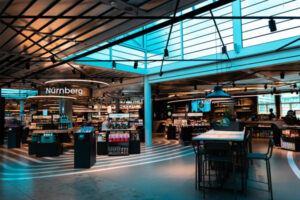BY ROBERTO ZOIA
New centers, including large ones, were opened during the year. A significant number of extensions and restructurings were also recorded, with new ones added to the pipeline.
This ensures that Italian centers, some of which were conceived several years ago, are better able to meet visitors’ changing needs, not only in terms of the merchandising mix, but also with respect to services and accessibility.
Overall, consumer trends are showing signs of recovery, including as a result of the improved macroeconomic environment. Lastly, our country has once again begun to attract foreign investors. Looking forward, these statistics also bode well for 2017.
What has emerged in this scenario is that, despite the fact that the GDP produced in the southern regions of Italy is around 30% lower than the GDP produced in the north, the same gap does not exist if we consider the sales of shopping center retailers alone. On the contrary, there are centers in the south that perform even better.
According to CBRE’s data, the average spend per visit in the south is in line with the rest of Italy. This is explained by different factors. Firstly, there have always been certain prejudices about the regions in southern Italy relative to both security and inefficient infrastructure.
The number of shopping centers, therefore, represents around 23% of the total shopping centers in Italy, which serve a slightly lower number of inhabitants than in northern Italy and a noticeably higher number when compared to central Italy.
The number of visitors per square meter is, therefore, higher than in the rest of Italy and there is also less competition.
Southern Italy, furthermore, is also comprised of regions that are historically tied to tourism and capable of attracting a large number of visitors thanks to the large number of tourist attractions.
Consumers, furthermore, are also more focused on shopping, especially when the tenants include international chains, which are the most appealing. As a result, there are centers in southern Italy today that are considered “champions” in terms of both size and performance and which are comparable not only to the centers in northern Italy, but also in other European countries.
In terms of transactions, opportunities involving single assets have recently materialized. This is attracting, above all, foreign investors, who are beginning to show interest in the best-performing centers. In 2015 and 2016, for example, a few large centers in Pompeii and Lecce were acquired by premiere international players.
We can, therefore, conclude by saying that the shopping center is an appealing format for southern Italy because, though purchasing power there is lower, the people there spend more time at shopping centers. The interest shown by shoppers should be leveraged, as it harbors a great opportunity for retailers.
Active management, a merchandise mix comprised of quality, international brands, as well as more local brands (particularly with respect to food courts, where tradition still has an important role) could prove to be a winning approach, including with a view to a possible increase in shoppers’ spending power.
What is your opinion on this topic? Discuss it with us! Send your opinion to opinion@across-magazine.com !







